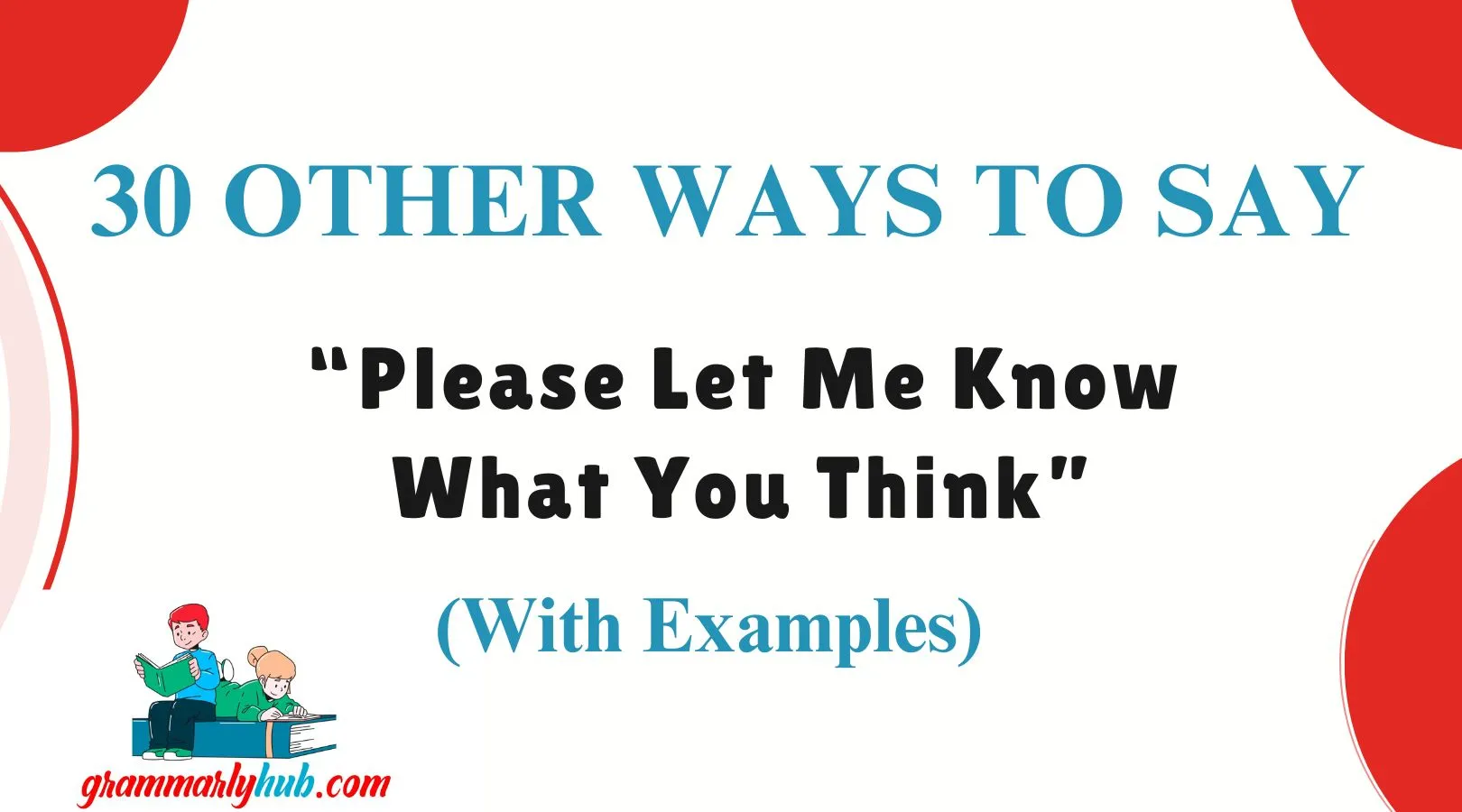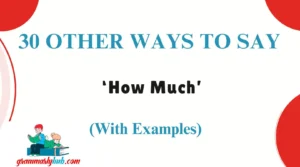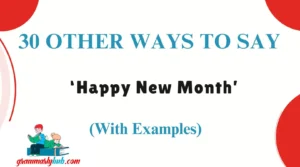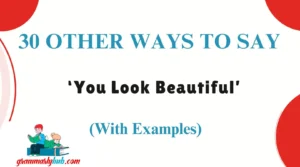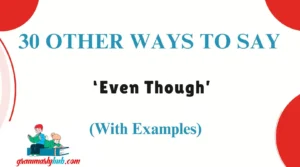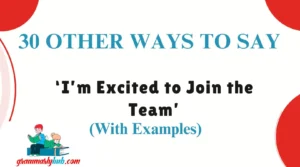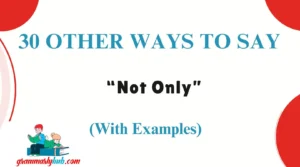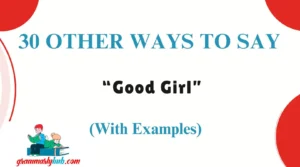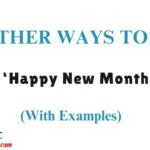In both professional and personal interactions, the way we solicit feedback can significantly impact the quality of responses we receive. While the phrase “Please let me know what you think” is polite and widely used, exploring alternative expressions can add variety and depth to our communication.
This article presents 30 alternative phrases that convey the same intent, each accompanied by definitions, explanations, usage scenarios, and tone considerations. By diversifying our language, we can foster more engaging and effective dialogues.
What Does “Please Let Me Know What You Think” Mean?
The phrase “Please let me know what you think” is a courteous request for someone’s opinion or feedback. It expresses openness to the recipient’s thoughts and encourages them to share their perspective. This phrase is commonly used in emails, meetings, and conversations to invite input on ideas, proposals, or work.
When to Use “Please Let Me Know What You Think”
This phrase is appropriate when seeking feedback, opinions, or approval. It is suitable for various contexts, including:
- Requesting input on a draft or proposal.
- Asking for thoughts on a decision or plan.
- Inviting feedback on performance or work.
Using this phrase demonstrates respect for the recipient’s viewpoint and fosters collaborative communication.
Is It Professional/Polite to Say “Please Let Me Know What You Think”?
Yes, the phrase is both professional and polite. It maintains a respectful tone and encourages open dialogue. However, overuse can lead to redundancy. Exploring alternative expressions can keep communication fresh and engaging.
Pros and Cons
Pros:
- Polite and respectful: Conveys courtesy and openness.
- Versatile: Suitable for various contexts and audiences.
- Encourages feedback: Invites the recipient to share their thoughts.
Cons:
- Overused: Frequent use may make the phrase feel generic.
- Lacks specificity: May not clearly indicate the type of feedback desired.
“Please Let Me Know What You Think” Synonyms
- I’d appreciate your feedback.
- I’d love to hear your thoughts.
- Your opinion means a lot to me.
- Let me know your thoughts when you can.
- Feel free to share what’s on your mind.
- I’m open to hearing your perspective.
- I value your insight on this.
- Would love to know what you think.
- Happy to hear your suggestions.
- Looking forward to your thoughts.
- Drop me your thoughts when you’re free.
- Tell me what you think, if you have time.
- I’d be grateful for your take on this.
- Let me know if you have any input.
- I’d like to know your opinion.
- Any thoughts you have would be great.
- I’d love your advice on this.
- Please share your point of view.
- I’m all ears for your feedback.
- Do you see anything I might’ve missed?
- I welcome your feedback.
- Thoughts? I’m listening.
- Keen to hear your point of view.
- Open to hearing your take on it.
- Let’s hear your perspective.
- Drop me your input when you get a moment.
- I’d be glad to hear your input.
- I welcome any thoughts you might have.
- If you have any thoughts, I’d love to hear them.
- I’m curious to know your take on this
1. I would appreciate your thoughts on this.
Definition: A polite request for someone’s opinion or feedback.
Explanation: This phrase conveys respect and a desire for the recipient’s input.
Scenario Example: “I’ve attached the draft report. I would appreciate your thoughts on this.”
Worst Use: When the recipient is not expected to provide feedback.
Tone: Formal and respectful.
2. Your feedback would be valuable to me.
Definition: Expresses that the recipient’s opinion is important.
Explanation: Highlights the value placed on the recipient’s input.
Scenario Example: “Before finalizing the design, your feedback would be valuable to me.”
Worst Use: When feedback is not genuinely sought.
Tone: Appreciative and sincere.
3. I look forward to hearing your perspective.
Definition: Anticipates the recipient’s viewpoint.
Explanation: Encourages the sharing of thoughts in a positive manner.
Scenario Example: “After reviewing the proposal, I look forward to hearing your perspective.”
Worst Use: When immediate feedback is required.
Tone: Optimistic and engaging.
4. Your opinion matters to me.
Definition: Emphasizes the importance of the recipient’s thoughts.
Explanation: Personalizes the request for feedback.
Scenario Example: “As we plan the event, your opinion matters to me.”
Worst Use: In formal documents where personalization is inappropriate.
Tone: Personal and affirming.
5. Kindly share your thoughts on this.
Definition: A courteous invitation for feedback.
Explanation: Maintains a formal tone while requesting input.
Scenario Example: “Kindly share your thoughts on this proposal at your earliest convenience.”
Worst Use: In casual conversations where formality is unnecessary.
Tone: Formal and polite.
6. I value your input on this issue.
Definition: Acknowledges the recipient’s expertise or insight.
Explanation: Shows respect for the recipient’s knowledge.
Scenario Example: “Given your experience, I value your input on this issue.”
Worst Use: When the recipient lacks relevant expertise.
Tone: Respectful and professional.
7. Please provide your feedback when you can.
Definition: Requests feedback with flexibility on timing.
Explanation: Allows the recipient to respond at their convenience.
Scenario Example: “Please provide your feedback when you can on the attached document.”
Worst Use: When urgent feedback is needed.
Tone: Considerate and accommodating.
8. I welcome your thoughts on this topic.
Definition: Invites the recipient to share their ideas.
Explanation: Encourages open discussion.
Scenario Example: “I welcome your thoughts on this topic during our meeting.”
Worst Use: When the topic is not open for discussion.
Tone: Open and inclusive.
9. Your feedback is highly appreciated.
Definition: Expresses gratitude for the recipient’s input.
Explanation: Shows that feedback is valued.
Scenario Example: “Your feedback is highly appreciated as we refine our strategy.”
Worst Use: When no feedback is expected.
Tone: Grateful and respectful.
10. I eagerly await your opinion on this matter.
Definition: Shows anticipation for the recipient’s thoughts.
Explanation: Indicates that the feedback is important and awaited.
Scenario Example: “I eagerly await your opinion on this matter to proceed accordingly.”
Worst Use: When the recipient may feel pressured.
Tone: Enthusiastic and earnest.
11. I’d love to hear your thoughts on this.
Definition: A friendly request for feedback.
Explanation: Adds a personal touch to the request.
Scenario Example: “I’d love to hear your thoughts on this new initiative.”
Worst Use: In formal communications where informality is inappropriate.
Tone: Warm and inviting.
12. Please feel free to share your opinion.
Definition: Encourages open expression of thoughts.
Explanation: Removes pressure and invites honest feedback.
Scenario Example: “Please feel free to share your opinion during the discussion.”
Worst Use: When specific feedback is required.
Tone: Open and non-restrictive.
13. I’m open to hearing your views.
Definition: Indicates receptiveness to the recipient’s perspective.
Explanation: Encourages sharing of different viewpoints.
Scenario Example: “I’m open to hearing your views on the proposed changes.”
Worst Use: When decisions are already finalized.
Tone: Receptive and inclusive.
14. I’m keen to receive your feedback.
Definition: Shows eagerness for the recipient’s input.
Explanation: Demonstrates that feedback is anticipated and valued.
Scenario Example: “I’m keen to receive your feedback on the draft policy.”
Worst Use: When feedback is optional or not required.
Tone: Enthusiastic and respectful.
15. Your perspective would be helpful.
Definition: Acknowledges the usefulness of the recipient’s viewpoint.
Explanation: Suggests that their input can contribute positively.
Scenario Example: “Your perspective would be helpful in finalizing the report.”
Worst Use: When the recipient lacks relevant experience.
Tone: Appreciative and collaborative.
16. I’m looking forward to hearing from you.
Definition: Expresses anticipation for the recipient’s response.
Explanation: Encourages timely feedback.
Scenario Example: “I’m looking forward to hearing from you regarding the proposal.”
Worst Use: When no response is expected.
Tone: Positive and anticipatory.
17. I’d appreciate your thoughts on this.
Definition: A polite request for feedback.
Explanation: Shows that the recipient’s opinion is valued.
Scenario Example: “I’d appreciate your thoughts on this marketing strategy.”
Worst Use: When the recipient is not involved in the matter.
Tone: Respectful and courteous.
18. Please share your insights.
Definition: Requests the recipient’s analysis or understanding.
Explanation: Encourages sharing of expertise.
Scenario Example: “Please share your insights on the recent market trends.”
Worst Use: When the recipient lacks relevant knowledge.
Tone: Professional and appreciative.
19. I’d be grateful for your feedback.
Definition: Expresses gratitude in advance for the recipient’s input.
Explanation: Shows humility and appreciation.
Scenario Example: “I’d be grateful for your feedback on the presentation.”
Worst Use: When feedback is not necessary.
Tone: Humble and sincere.
20. Your thoughts would be greatly appreciated.
Definition: Emphasizes the value of the recipient’s opinion.
Explanation: Encourages the recipient to share their perspective.
Scenario Example: “Your thoughts would be greatly appreciated on this matter.”
Worst Use: When the recipient’s input is not relevant.
Tone: Respectful and appreciative.
21. I invite your feedback.
Definition: A formal request for the recipient’s opinion.
Explanation: Encourages participation in the discussion.
Scenario Example: “I invite your feedback on the proposed changes.”
Worst Use: In casual conversations.
Tone: Formal and inclusive.
22. I’m interested in your viewpoint.
Definition: Expresses curiosity about the recipient’s perspective.
Explanation: Encourages sharing of unique insights.
Scenario Example: “I’m interested in your viewpoint on the new policy.”
Worst Use: When the recipient is not involved in the topic.
Tone: Curious and engaging.
23. Please let me know your thoughts at your convenience.
Definition: Requests feedback without urgency.
Explanation: Allows the recipient to respond when suitable.
Scenario Example: “Please let me know your thoughts at your convenience.”
Worst Use: When immediate feedback is needed.
Tone: Considerate and flexible.
24. I’d welcome your opinion.
Definition: Invites the recipient to share their thoughts.
Explanation: Encourages open dialogue.
Scenario Example: “I’d welcome your opinion on the proposed schedule.”
Worst Use: When the matter is not open for discussion.
Tone: Warm and inviting.
25. Your input would be appreciated.
Definition: Acknowledges the value of the recipient’s feedback.
Explanation: Encourages sharing of ideas or suggestions.
Scenario Example: “Your input would be appreciated on the project plan.”
Worst Use: When feedback is not necessary.
Tone: Respectful and appreciative.
26. I’m eager to hear your thoughts.
Definition: Shows enthusiasm for the recipient’s feedback.
Explanation: Encourages prompt sharing of opinions.
Scenario Example: “I’m eager to hear your thoughts on the new design.”
27. I’d be glad to hear your input.
Definition: A friendly way of inviting someone to share their feedback or opinion.
Explanation: This phrase adds a sense of warmth and appreciation, making the recipient feel that their voice matters and will be welcomed positively.
Scenario Example: “I’d be glad to hear your input on how we can improve next quarter’s campaign.”
Worst Use: Using this with someone who has no involvement or insight into the topic can seem disingenuous.
Tone: Warm, informal, and appreciative.
28. I welcome any thoughts you might have.
Definition: A gentle invitation to share feedback, thoughts, or opinions without pressure.
Explanation: This is especially useful when trying to create a safe space for open dialogue or when communicating with people who may be hesitant to speak up.
Scenario Example: “I welcome any thoughts you might have on the new guidelines—no rush, just whenever you’re ready.”
Worst Use: Avoid using this if you actually need specific, timely, or structured feedback.
Tone: Open, inclusive, and supportive.
29. If you have any thoughts, I’d love to hear them.
Definition: Soft and approachable way to ask for feedback while showing genuine interest.
Explanation: The phrase encourages dialogue in a casual, non-demanding way, which can put the recipient at ease.
Scenario Example: “If you have any thoughts on the layout I just shared, I’d love to hear them before the next draft.”
Worst Use: When communicating in formal business contexts where a direct, structured request might be better received.
Tone: Casual, inviting, and friendly.
30. I’m curious to know your take on this.
Definition: A more inquisitive and personal phrase to encourage feedback or opinions.
Explanation: This variation implies an interest in the unique viewpoint of the other person, making it perfect for thoughtful discussions or collaborative brainstorming.
Scenario Example: “I’ve been thinking about this update for a while, but I’m curious to know your take on this.”
Worst Use: Not ideal in ultra-formal communication, where the word “curious” might feel too informal.
Tone: Genuinely inquisitive and conversational.
Conclusion:
In every conversation—especially written ones—the tone and phrasing we choose can shape how our message is received. Saying “Please let me know what you think” is clear and polite, but sometimes it helps to have a few more empathetic, professional, or even creative ways to invite feedback. Whether you’re writing an email, messaging a colleague, or chatting with a friend, the right phrase can make your request feel more personal, respectful, and engaging.
These 30 thoughtful alternatives are designed to match a range of tones, from formal to casual, warm to inquisitive. Some add a collaborative touch, others reflect genuine curiosity, but all share the goal of opening up a conversation in a way that feels natural and sincere.
By choosing your words carefully, you show the other person that their thoughts matter—and that you’re invested in what they have to say. Try a few out in your next message and see how your connections grow stronger and more open.
Would you like me to compile all 30 alternatives into a list for easy reference, or would you like a shareable summary version of this article?
FAQs
1. Can I use these alternatives in professional emails?
Absolutely. Many of the alternatives listed, such as “I’d appreciate your feedback” or “I welcome any thoughts you might have,” are perfect for professional settings. They’re polite, respectful, and offer a more engaging tone than the standard phrase. Just be sure to match the level of formality to your audience.
2. Which option sounds more friendly and less formal?
Phrases like “Feel free to share your thoughts” or “I’m curious to hear what you think” are great when you want to sound friendly and approachable without being too formal. These are ideal for colleagues you work with closely or casual communication.
3. How do I choose the best alternative?
Think about the tone you want to strike and who you’re speaking to. For example:
- Use “I’d love to hear your thoughts” for a warm, collaborative tone.
- Try “Let me know if you have suggestions” when you need constructive input.
- Use “I welcome your feedback” for a professional yet polite request.
4. Are these alternatives better for formal or informal messages?
This list includes options for both styles. Some are great for business communications, while others are perfect for friendly chats or personal messages. The key is to stay genuine, no matter the context.
5. Why does word choice matter when asking for feedback?
The words you choose set the emotional tone of your message. Using thoughtful alternatives makes your request sound more intentional, open, and respectful, which can encourage the other person to respond more honestly and comfortably.

Welcome to GrammarlyHub, your go-to destination for mastering grammar, improving your writing, and finding the best language tools available online. Founded by Emma Rose, a passionate writer and advocate for clear communication, GrammarlyHub was built to help people express themselves with confidence and accuracy.
